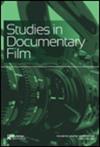High diversity of native plants and vegetation types in the Morialta Conservation Park and the threat of invasive species
IF 0.8
4区 综合性期刊
Q3 MULTIDISCIPLINARY SCIENCES
Transactions of the Royal Society of South Australia
Pub Date : 2020-07-02
DOI:10.1080/03721426.2020.1786779
引用次数: 0
Abstract
ABSTRACT Morialta Conservation Park is a scenic protected area that contains important vegetation remnants of the Mount Lofty Ranges. Here we investigate the vegetation ecology, soils and plant diversity of the park. Using a stratified, quantitative survey of woody vegetation and topsoils throughout the park within forty-five 10 × 10 m plots, we identified ten distinct vegetation types, nine being native and the other being dominated by the invasive European olive (Olea europaea). Soil conductivity and fertility, as well as aspect, were significant predictors of species composition, indicating that high environmental heterogeneity in soils and topography are important in facilitating the high biodiversity in the Morialta Conservation Park. The European olive and Boneseed (Chrysanthemoides monilifera ssp. monilifera) are widespread in the park and a threat to native vegetation. Using published plant lists and the Atlas of Living Australia, we report 486 native (and 300 introduced) plant taxa from the park and its immediate surrounds, including species considered endangered at either the state or national level, or the IUCN Red List. Therefore, the park is highly important for conservation and the threat posed by the European olive, Boneseed and other invasive species should be effectively managed.Morialta自然保护公园原生植物和植被类型的高度多样性和入侵物种的威胁
莫里阿尔塔自然保护区是一个风景优美的保护区,包含了高耸山脉的重要植被遗迹。在这里我们调查了公园的植被生态、土壤和植物多样性。通过对公园内45个10 × 10 m样地的木本植被和表层土壤进行分层定量调查,我们确定了10种不同的植被类型,其中9种为本地植被,另一种为入侵的欧洲橄榄(Olea europaea)。土壤电导率、肥力和坡向是物种组成的重要预测因子,表明土壤和地形的高度环境异质性对Morialta保护公园的高生物多样性具有重要影响。欧洲橄榄骨籽(Chrysanthemoides monilifera ssp.)Monilifera)在公园内广泛分布,对当地植被构成威胁。利用已出版的植物名录和澳大利亚生活地图集,我们报告了来自公园及其周边地区的486种本地(和300种引进)植物分类群,包括在州或国家级或世界自然保护联盟红色名录中被视为濒危的物种。因此,该公园具有高度的保护意义,应有效管理欧洲橄榄、骨籽等入侵物种的威胁。
本文章由计算机程序翻译,如有差异,请以英文原文为准。
求助全文
约1分钟内获得全文
求助全文
来源期刊
CiteScore
1.40
自引率
12.50%
发文量
17
审稿时长
>12 weeks
期刊介绍:
Published since 1880, the Transactions of the Royal Society of South Australia is a multidisciplinary journal that aims to publish high quality, peer-reviewed papers of particular relevance to Australasia.
There is a particular focus on natural history topics such as: botany, zoology, geology, geomorphology, palaeontology, meteorology, geophysics, biophysics, soil science and environmental science, and environmental health. However, the journal is not restricted to these fields, with papers concerning epidemiology, ethnology, anthropology, linguistics, and the history of science and exploration also welcomed.
Submissions are welcome from all authors, and membership of the Royal Society of South Australia is not required.
The following types of manuscripts are welcome: Reviews, Original Research Papers, History of Science and Exploration, Brief Communications, Obituaries.

 求助内容:
求助内容: 应助结果提醒方式:
应助结果提醒方式:


